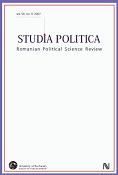Confesiunile neoprotestante din România în perioada regimului comunist: 1945-1965.
The Neo-Protestant Churches in the Communist period: 1945-1965.
Author(s): Gheorghe ModoranSubject(s): Politics / Political Sciences
Published by: Editura Universităţii din Bucureşti
Keywords: Key-words: Neo-Protestant Churches; communism; religious freedom; repression.
Summary/Abstract: This paper studies the evolution of the Neo-Protestant churches (Adventist, Baptist, Evangelist Christian and Pentecostal) in the first part of the communist regime and their relationship with the new regime of „popular democracy”. We first examine the need of implementation of the Soviet model in the religious politics of the regime that came to power after the 23rd of August 1944. This will be followed by the presentation of the legal context specific to the Neo-Protestant churches and of the she statistical situation in the country, with explanations concerning the geographical disparities and the differences in growth among the Churches. Considering the specific problems of this time period, the paper concentrates on the restrictive and repressive measures of the regime against these churches. The political strategy was decided by the central administration of the communist party after the soviet model but taking also the specificity of the Romanian context into consideration. Responsible for the application of these strategies were the Ministry of Cults and the Security Services. The first was responsible for the restrictive measures meant to curtail religious activities and the latter for the repressive actions. As restrictive measures I mention: annulations of religious services, the removal of the working permit of pastors, the confiscation and demolition of worship places. The main repressive measures were: investigation, torturing and sending to prison of pastors and church leaders considered to be hostile elements, enemies of the regime. Chronological and thematic methods are used to examine the materials, and the paper draws mainly on documents identified in the following archives: National Archives with the Funds: General Police Direction, General Gendarmerie Inspectorate, The Presidency of the Council of Ministers– Minutes, The Central Committee of the Romanian Communist Party – Office; The Archives of the CNSAS and the Archives of the Ministry of Cults: Fund Research Direction.
Journal: Studia Politica. Romanian Political Science Review
- Issue Year: 7/2007
- Issue No: 3
- Page Range: 655-673
- Page Count: 18
- Language: Romanian

